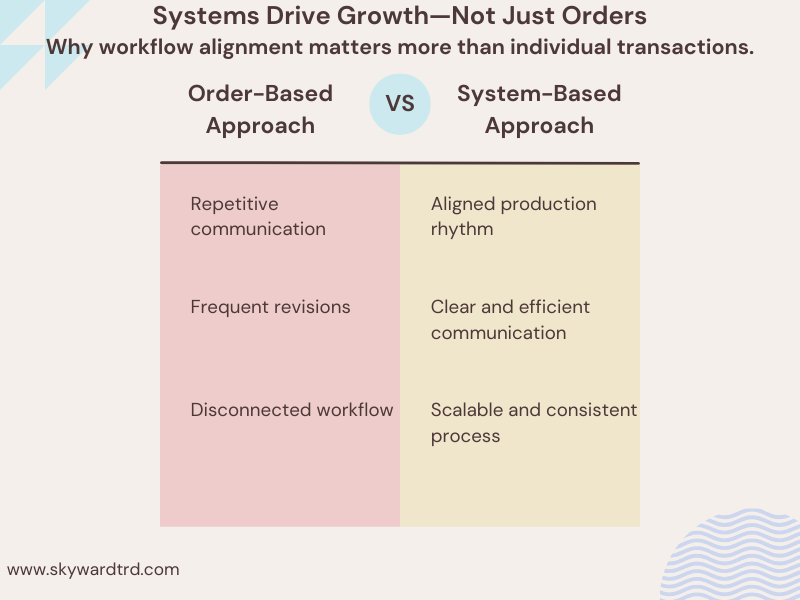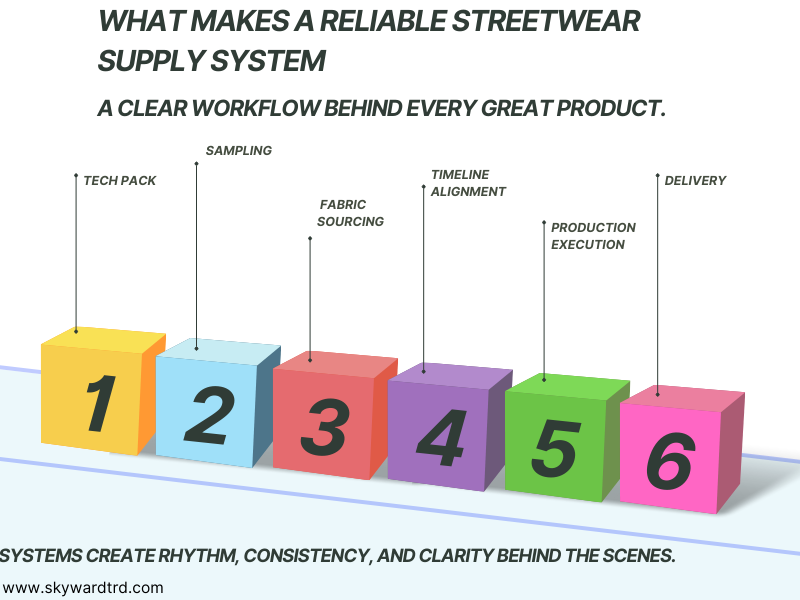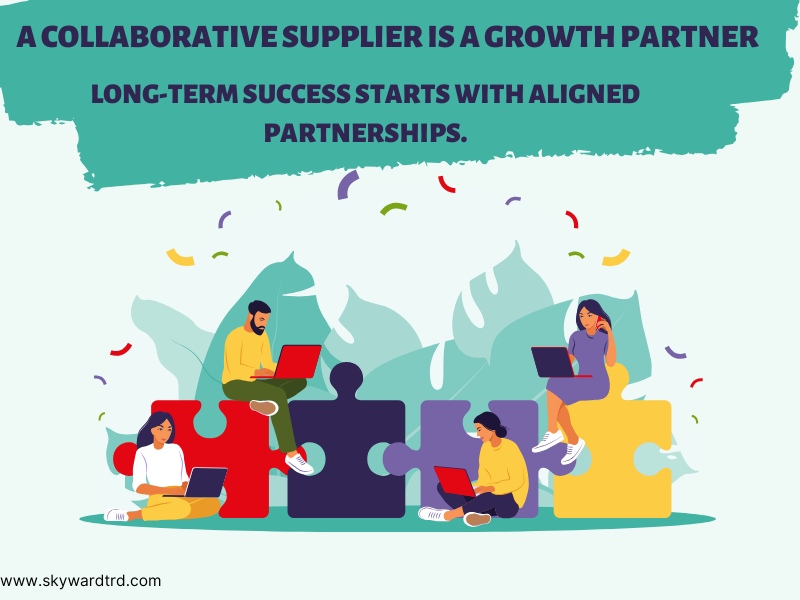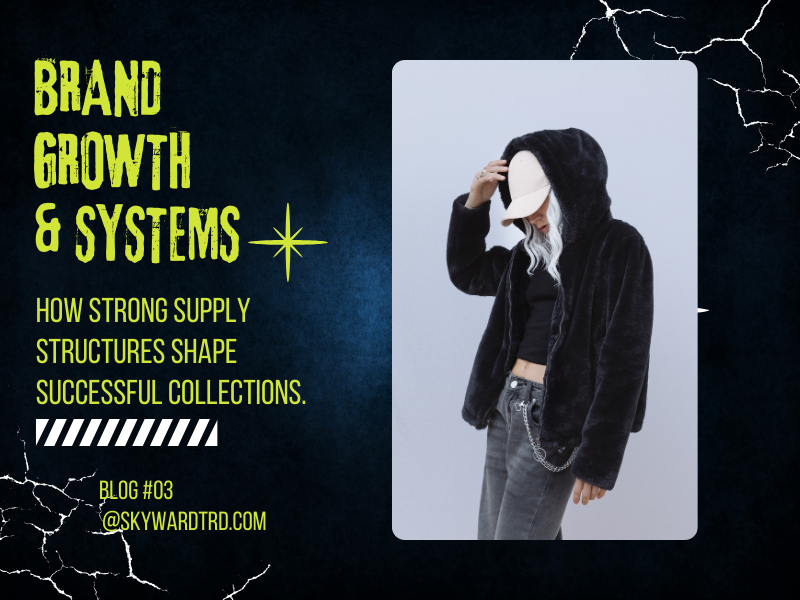As Collections Expand, Supply Systems Become the Backbone
Many streetwear brands begin with a few core items—a graphic tee, a pair of jeans, maybe a signature hoodie. These first pieces often capture the brand’s original spirit and serve as the foundation for early market recognition.
But as the brand’s presence grows, so does the complexity of its product range. Over time, collections naturally evolve to include more technical categories: outerwear, knitwear, hybrid garments, or workwear-inspired silhouettes. This shift represents more than just creative ambition—it signals the need for a stronger, more responsive supply structure behind the scenes.
At this stage, many streetwear brands realize that the real challenge isn’t just about designing more advanced garments—it’s about building the internal systems that can bring those designs to life smoothly and consistently.

From Vendor Selection to Workflow Integration: A Natural Progression
In the early phases, working with suppliers might start with a single sample or a price quote. But as product complexity grows—shorter timelines, more variations, tighter coordination—the simple “send spec, receive product” dynamic no longer works effectively.
Brands need more than just manufacturers who can execute—they need partners who can think collaboratively, adapt to shifting needs, and maintain consistency across multiple categories.

This is not an overnight transformation, but a natural progression in a brand’s growth journey.
We’ve seen it repeatedly: streetwear brands move from focusing purely on unit cost to recognizing the value of development efficiency, communication clarity, and reliable cross-category support.
Eventually, they come to understand that their long-term competitiveness lies not just in product design, but in the systems that deliver it.
Why Streetwear Brands Require Specialized Supply Support
Unlike traditional mass-market labels, streetwear brands often operate with faster creative cycles, more intricate design details, and smaller, category-diverse production volumes. What sets them apart visually also makes their production more challenging.
As a brand moves beyond core items into technical categories like layered jackets or structured cargo pants, the need for a well-integrated supply system becomes critical. Without a streamlined workflow—including sampling coordination, fabric alternatives, lead time alignment, and technical support—projects can quickly become chaotic, repetitive, and costly.
Even great designs can fall flat if the system behind them lacks precision.

In a market where consistency and delivery experience matter just as much as the visual concept, having a reliable supply structure is no longer optional—it’s a strategic advantage.
A Trusted Supply System Is a Growth Accelerator, Not Just a Back-End Function
We’ve witnessed the growth curve of several streetwear brands — from early-stage development to building complete product lines.
One thing we’ve consistently observed: the most successful brands don’t just focus on placing orders — they focus on building systems.
What seems complex at first gradually becomes smoother, because there’s a clear structure behind the process.
A truly collaborative supplier isn’t just a production line—they’re a partner who grows with your brand, anticipates challenges, and adapts with you over time.
When brands treat their supply chain as part of their internal team rather than an external cost center, product development becomes a controlled, repeatable, and brand-aligned process—rather than a constant firefight.

Systems Build Sustainability, Not Just Scale
The future of streetwear brands won’t be built on one-hit product drops—it will be sustained by the maturity of their internal operations, production reliability, and the strength of their collaborative ecosystems.
As competition intensifies and customer expectations grow, the brands that will thrive are those that invest not only in great design but in the systems and partnerships that enable those designs to reach market on time, on spec, and at the right quality level.
If your brand is entering a new stage of growth, this may be the perfect time to rethink:
Do we have a supply system that can keep pace with our creative evolution?
Are we working with partners who understand our vision and can grow with us?
We’re here to support exactly that kind of evolution—not just by delivering products, but by building a reliable rhythm behind your brand’s success.
If that sounds like what you’ve been searching for, we’d be happy to start a conversation.






